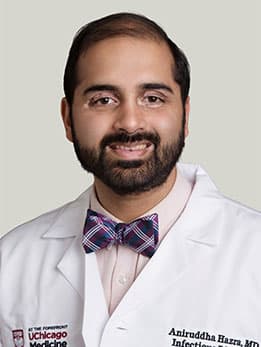What you need to know about the recent tuberculosis outbreak

A recent tuberculosis (TB) outbreak in Kansas has public health officials questioning whether the airborne disease has the potential to spread nationwide.
As of late January, there were more than 60 cases in a concentrated area near Kansas City. This is considered a large outbreak in the U.S.
Infectious diseases experts have raised concerns about how the outbreak got so big, and whether a breakdown in public health and safety measures may have contributed.
For now, the risk of a TB outbreak in Illinois remains low, but here are some things to know about this contagious disease:
What is tuberculosis?
Tuberculosis is an infectious disease caused by a bacteria called mycobacterium tuberculosis. It typically settles in the lungs, but it can also be in the lymph nodes, spine, kidneys, brain and larynx.
How does tuberculosis spread?
Tuberculosis spreads through the air, but it’s not as contagious as COVID or influenza. To catch it, you need to be near someone with an active TB infection.
It’s unlikely you’d catch it from just walking past someone with TB in a hallway; there needs to be a slightly longer exposure. But if you’re with an infected person who is speaking to you, coughing or singing near you, your risk increases.
Tuberculosis does not spread by touching surfaces or sharing food or drinks.
What are symptoms of tuberculosis?
For TB in the lungs, the symptoms often include:
- A bad cough that lasts 3 weeks or longer
- Chest pain
- Coughing up blood or phlegm
- An abnormal chest X-ray
- Fatigue or weakness
- Loss of appetite or weight
- Fever
- Chills
- Night sweats
How can I be tested for TB?
Blood and skin tests are available, and coughed-up phlegm (sputum) can be tested. You can request a test from your primary care physician.
Is tuberculosis deadly?
It can be, but it’s rarely fatal in the United States. Tuberculosis is a curable and preventable disease, and most Americans have access to the medications needed to treat it.
People with lung issues, such as COPD or emphysema, are more vulnerable.
Tuberculosis is extremely deadly in certain parts of the world where people don’t have access to healthcare. It’s one of the deadliest infectious diseases in the world, and in 2023, killed more than 1.25 million people.
How do you treat tuberculosis?
There are antibiotics for TB, but treatment isn’t as simple as taking a typical medication, such as Amoxicillin. The regimen is intense. It takes months to complete, and it involves multiple drugs with side effects that are hard for some people to tolerate.
Is there a tuberculosis vaccine? Should I get it?
There is no FDA-approved vaccine for TB in the United States. There is a vaccine used in other parts of the world, where TB is widespread, but it’s only partially effective.
How can I protect myself against tuberculosis?
The only thing you can really do is to make sure you’re not around sick people. Wearing N95 masks can help. And making sure people with TB remain isolated helps it from spreading.
Can I have inactive tuberculosis?
Yes. Inactive TB, or latent TB infection, can be present in the body. That means the person has TB germs, but they don’t feel sick and cannot spread the germs to others. Inactive TB can also be treated with antibiotics.

Aniruddha Hazra, MD
Aniruddha Hazra, MD, is an infectious diseases expert at the University of Chicago Medicine, an associate professor of the Section of Infectious Diseases and Global Health, and Director of the Infectious Diseases Fellowship Program.
Learn more about Dr. Hazra